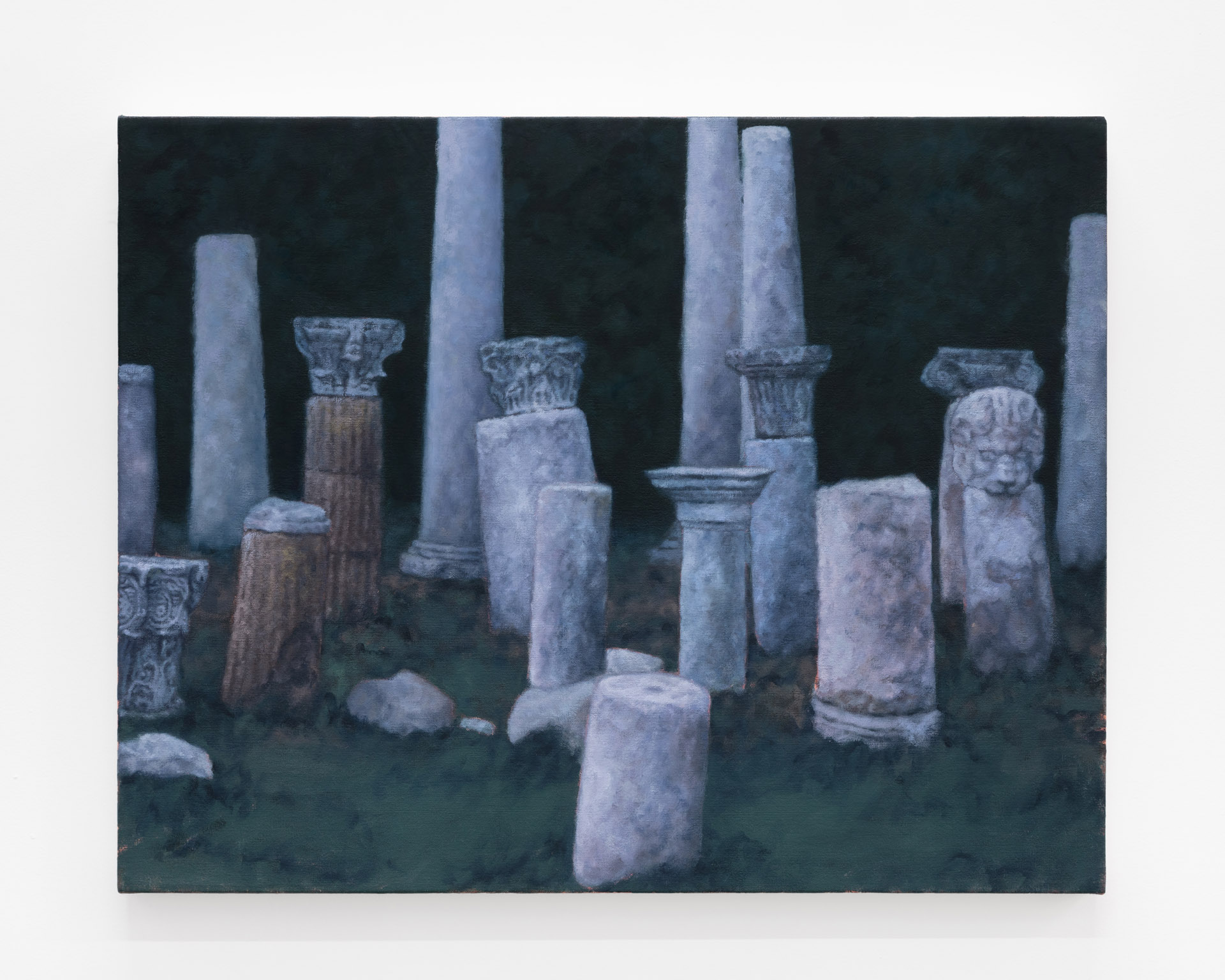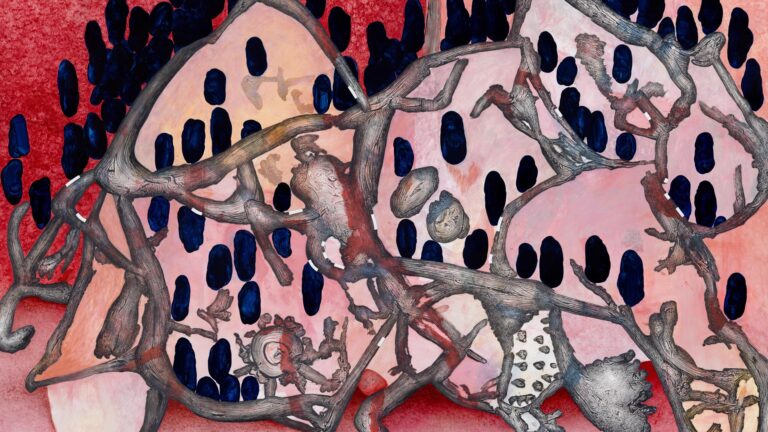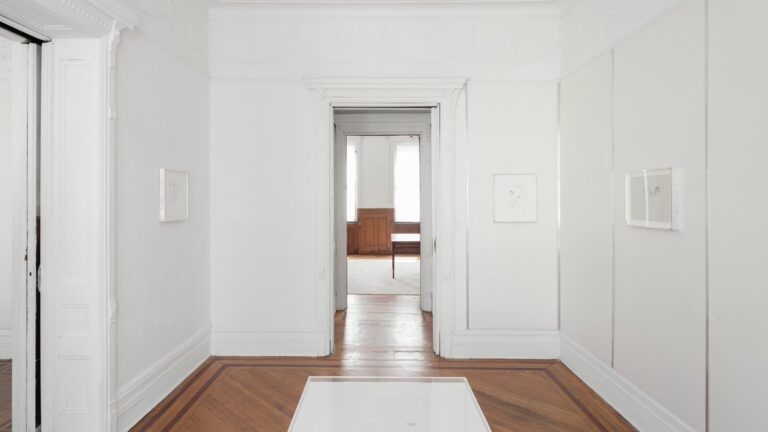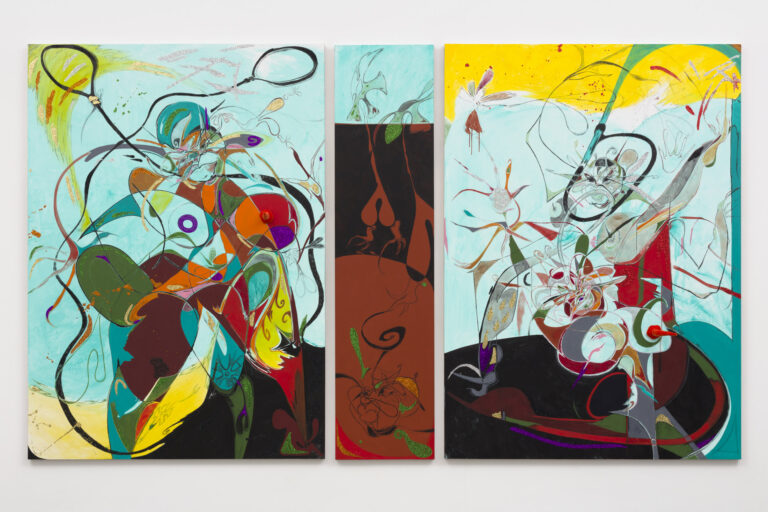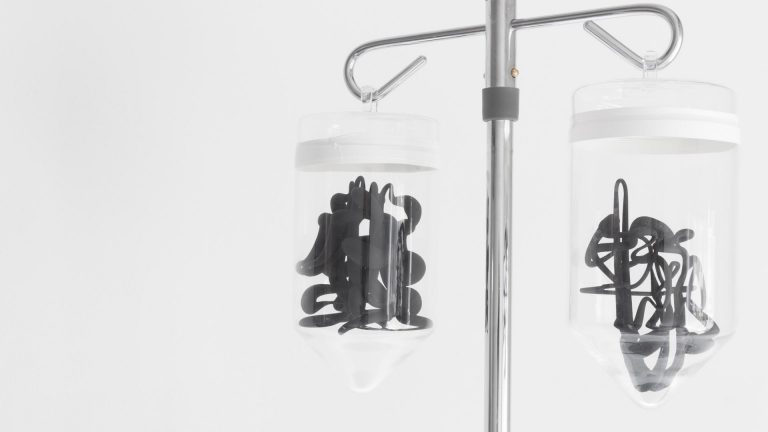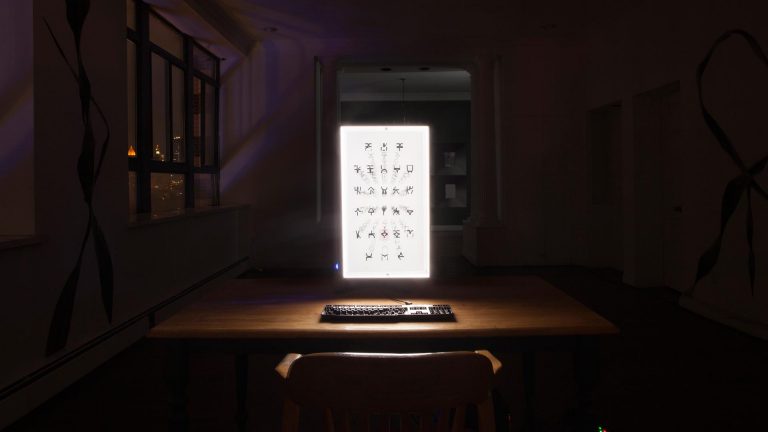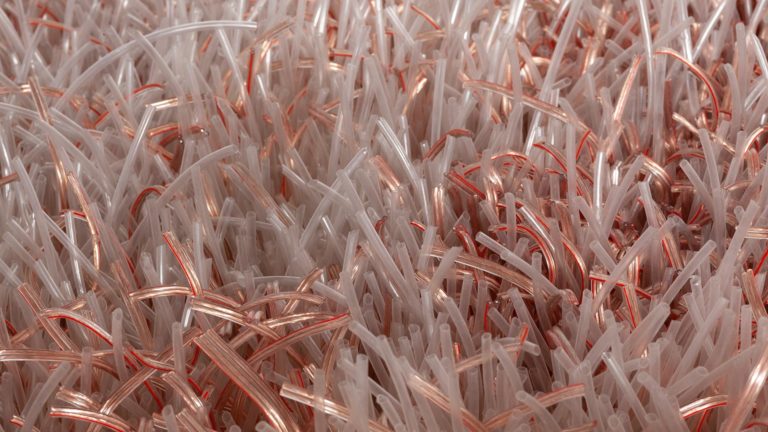Artist: Jennifer Carvalho
Exhibition title: Sign of the Times
Venue: Helena Anrather, New York, US
Date: July 8 – August 13, 2021
Photography: all images copyright and courtesy of the artist and Helena Anrather, New York
In Flora of the Colosseum of Rome (1855), the British botanist Richard Deakin catalogued “four hundred and twenty plants growing spontaneously upon the ruins of the Colosseum of Rome.” Many of the flowers were found nowhere else in Europe—a botanical mystery most likely explained by seeds carried by animals transported to perform for the Roman crowds. Brought to die, the animals carried their past into the future. “[Flowers] form a link in the memory, and teach us hopeful and soothing lessons, amid the sadness of bygone ages,” wrote Deakin.
These mnemonic links and temporal representations of the past are the subject of Jennifer Carvalho’s exhibition Sign of the times, at Helena Anrather. In Wildflowers (2), the artist has painted the living descendants of Deakin’s flowers. Despite the fact the yellow blooms are familiar, the flowers are distinctly from another time. The aura of the painting—achieved through a tight crop, a finely tuned palette that casts everything in a greenish-grey hue, and a tangible depth built up from many layers of paint—remains haunted.
The exchange between 21st-century painting—the use of found and collected images, cropped and filtered as if seen through a camera’s lens, and the traces of the paintings’ apparatus left on the canvas, are distinctly contemporary—and reference material from antiquity to the Renaissance in Carvalho’s work takes the form of hauntology, a term coined by Jacques Derrida in his Specters of Marx (1993) to capture the idea that the ghosts of the past are unknowable—unable to be fully articulated—and yet are paradoxically still present, influencing and co-existing alongside the present and possible futures. By using a medium rooted in the past, Carvalho gets close enough to touch the ghosts that haunt the canvases.
Similar to the deconstructive potential of Derrida’s hauntology, Carvalho’s paintings are visual portmanteaus, combining multiple scenes and framing in a way that detaches the work from time and place. The paintings float gently above reality. Through Carvalho’s present-day lens, history is removed from its static place in the past. In A jolt (double shadow) Carvalho combines a sundial from Lars Von Tier’s Melancholia and an image of a renaissance garden. The scene in which the sundial appears is shot in slow motion, with time dragged out painfully. This dictated slowness translates to Carvalho’s paintings, which urge the viewer to pan the canvas steadily. The subject of time becomes elongated and unavoidable.
A soundtrack of silence accompanies the paintings. In Eve’s face (Masaccio), her mouth is open in a wail but no sound is heard. The haunting is felt, not articulated. Through the study of decay and wreckage, the paintings depict how the present will look to the future. Carvalho refers to this as “productive sites of ruins.” In a sense, in each of her works Carvalho asks: How can the past help us imagine what comes next?
– Tatum Dooley
Jennifer Carvalho graduated from University of Guelph in 2013. Recent exhibitions include Franz Kaka, Toronto; Union Pacific, London; The Embassy of Canada, Washington D.C.; Sherman Projects, Toronto; Montreal Museum of Fine Art, Montreal; and The National Gallery of Canada, Ottawa. In 2020 Carvalho was an artist in residence at The Banff Centre, Banff, AB. Carvalho has been awarded numerous prizes including Mary E. Hofstetter Legacy Fund for Excellence in the Visual Arts, Banff Centre; Toronto Arts Council Visual Artist Program, Toronto Arts Council; Research and Creation Grant, Canada Council for the Arts; and The Elizabeth Greenshields Foundation Grant. Carvalho is in public collections, including RBC, Corporate Art Collection, Toronto; TD Bank Financial Group, Corporate Art Collection, Toronto; Art Gallery of Hamilton, Hamilton, ON; and Scotia Bank, Corporate Art Collection, Toronto. Carvalho lives and works in Toronto.
Jennifer Carvalho, Sign of the Times, 2021, exhibition view, Helena Anrather, New York
Jennifer Carvalho, Sign of the Times, 2021, exhibition view, Helena Anrather, New York
Jennifer Carvalho, Sign of the Times, 2021, exhibition view, Helena Anrather, New York
Jennifer Carvalho, Sign of the Times, 2021, exhibition view, Helena Anrather, New York
Jennifer Carvalho, Sign of the Times, 2021, exhibition view, Helena Anrather, New York
Jennifer Carvalho, Sign of the Times, 2021, exhibition view, Helena Anrather, New York
Jennifer Carvalho, Sign of the Times, 2021, exhibition view, Helena Anrather, New York
Jennifer Carvalho, Sign of the Times, 2021, exhibition view, Helena Anrather, New York
Jennifer Carvalho, Sign of the Times, 2021, exhibition view, Helena Anrather, New York
Jennifer Carvalho, Sign of the Times, 2021, exhibition view, Helena Anrather, New York
Jennifer Carvalho, Sign of the Times, 2021, exhibition view, Helena Anrather, New York
Jennifer Carvalho, A petty place, 2021, Oil on Canvas, 9 x 12 inches
Jennifer Carvalho, Cleopatra and Dioscorides, 2021, Oil on canvas, 16 x 20 inches
Jennifer Carvalho, Wildflowers (2), 2021, Oil on canvas, 9x 12 inches
Jennifer Carvalho, Crying fountain, 2021, Oil on canvas, 12 x 9 inches
Jennifer Carvalho, Don’t move or breathe or speak, 2020, Oil on canvas, 16 x 20 inches
Jennifer Carvalho, Hellmouth, 2020, Oil on canvas, 16 x 20 inches
Jennifer Carvalho, Maenad, 2021, Oil on canvas, 20 x 16 inches
Jennifer Carvalho, Roman mask and maze, 2021, Oil on canvas, 33 x 48 inches
Jennifer Carvalho, Velvet dusk, 2020, Oil on canvas, 22 x 28 inches
Jennifer Carvalho, Sign of the Times, 2021, exhibition view, Helena Anrather, New York




















